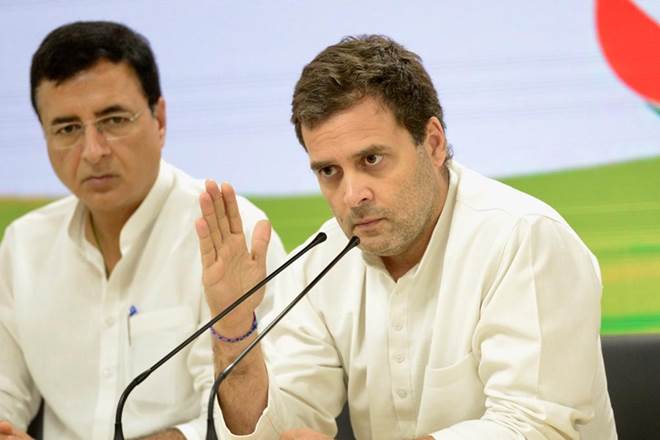Rahul Gandhi’s Nyay – Nyuntam Aay Yojana: Congress President Rahul Gandhi’s election promise of providing a minimum income support of up to Rs 6,000 per month to 5 crore poor families has triggered intense debate in the country. Implementation of the scheme will require Rs 3.6 lakh crore, almost half of India’s estimated fiscal deficit for the fiscal year 2019-20. Several economic pundits said the plan was doable, provided all other welfare schemes were subsumed into one basic income scheme.
The Congress Party took the debate over the feasibility of the scheme to a new level when the chief of the party’s communication department Randeep Surjewala clarified the next day that the scheme will be over and above the existing welfare schemes. He said that the outlay for existing schemes such as MNREGA, Food Security and other welfare programmes will not be discontinued to arrange fund for this mega scheme.
The Congress Party’s claims are in sharp contrast with the view taken by lead economists of the country.
Economist NR Bhanumurthy, who supported the idea in terms of economics and philosophy, said whichever government comes to power after Lok Sabha elections will have to consider shifting from the present model of running several welfare schemes to one universal basic income scheme.
ALSO READ: Rahul Gandhi’s income support seems what economy needs, but short on funding details
“Once you get the universal basic income then rest of the things will have to go,” said NR Bhanumurthy, a Professor at the National Institute of Public Finance and Policy, adding that all the government programmes are aimed at supporting the 20 per cent population living below the poverty line.
Providing basic income to five crore families or 25 crore people means coverage of 20% population living at the bottom of the pyramid. However, it will be difficult for any government to discontinue with existing welfare schemes like MNREGA, newly rolled out PM Kisan Samman Nidhi, fuel and fertiliser subsidies and other welfare schemes like widow and old age pensions, scholarships for minorities, SC/STs and students as the money is routed through nearly 90 central sector schemes and centrally sponsored schemes.
NREGA has 12 crore active workers with an outlay of Rs 60,000 crore. PM Kisan Samman Nidhi is aimed at providing relief to 12 crore agricultural households with an annual outgo of Rs 75,000 crore. Ayushman Bharat Yojana intends to cover 11 crore poor families or 50 crore poor people, almost 40% of the population of the country. According to the revised estimates for 2018-19 budget, the expenditure of food security was Rs 1.71 lakh crore, and the expenditure on other subsidies, namely fuel and fertiliser subsidies, was Rs 1.25 lakh crore.
As per the information given in the interim budget for 2019-20, total central government schemes — central sector schemes and centrally sponsored schemes account for Rs 8.6 lakh crore and Rs 3.27 lakh crore respectively.
Responding to Rahul Gandhi’s proposal of minimum income plan, finance minister Arun Jaitley had said the same day that if the budget for all welfare scheme is put together then it amounts to close to Rs 7 lakh crore. Rahul Gandhi’s proposal will add Rs 3.6 lakh crore to this figure taking the total figure on welfare schemes to close to Rs 11 lakh crore, which will put unprecedented pressure on fiscal health of the central government.
Professor Bhanumurthy says all the government programmes are aimed at covering 20% poorest people of the country and it can be scaled up by three times to cover 93-95 crore people when the government has sufficient funds.
“When you have sufficient funds then you can cover the rest of the people later, what Arvind Subramanian calls 75% of the people,” Professor Bhanumurthy told Financial Express Online.


